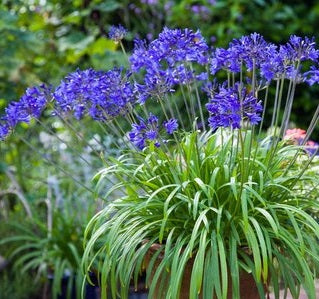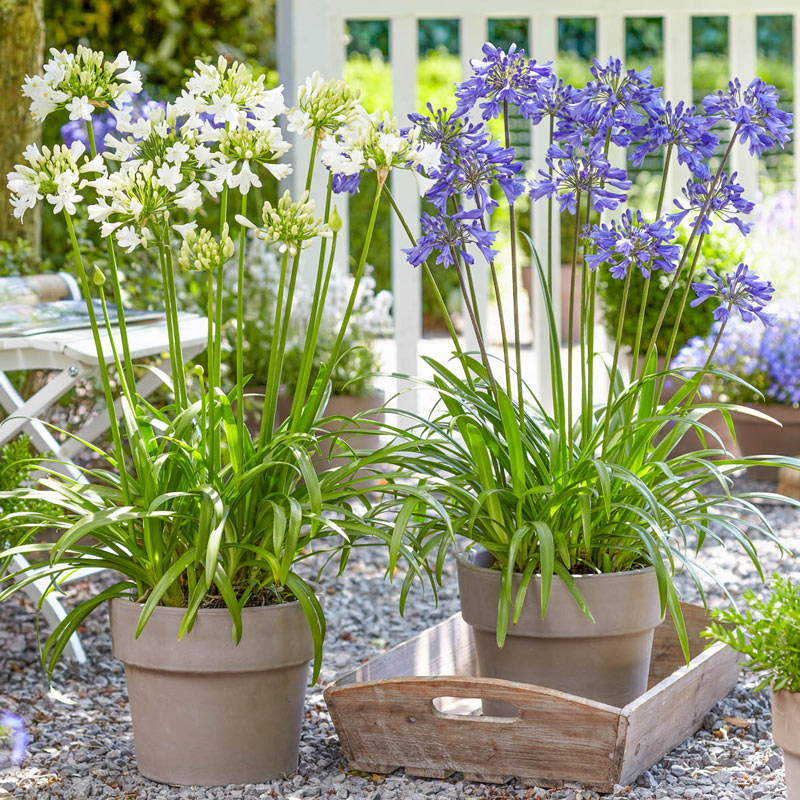Expanding Agapanthus: A Total Guide to Beautiful Blooms
Expanding Agapanthus: A Total Guide to Beautiful Blooms
Blog Article
Letting Loose the Secret to Effective Agapanthus Growing: Advice for a Flourishing Garden
In the world of horticulture, growing agapanthus effectively requires a critical method that incorporates different elements of plant care. By understanding the subtleties of agapanthus cultivation, one can produce an atmosphere where these plants thrive and flower generously.
Planting Agapanthus: Ideal Practices
When planting Agapanthus, correct dirt prep work is necessary for ensuring effective growth and growth of these beautiful flowers. Agapanthus, generally referred to as Lily of the Nile or African lily, grows in well-draining dirt with a slightly acidic to neutral pH degree - Agapanthus. Before growing, it is critical to amend heavy clay dirts with organic matter such as garden compost or peat moss to improve drain and provide vital nutrients for the plants
To grow Agapanthus, choose a place that obtains complete sunshine to partial shade, as this will promote healthy and balanced growth and plentiful blooming. Dig an opening twice the size of the plant's origin ball and position the Agapanthus at the same depth it was previously expanding. Carefully backfill the opening with dirt, weighing down strongly to remove any air pockets around the roots.
Water the freshly planted Agapanthus completely and remain to maintain the dirt evenly wet, particularly throughout the plant's active growing season. Agapanthus. Applying a balanced plant food once a month can better sustain the plant's development and blooming. By adhering to these best practices for growing Agapanthus, you can develop a stunning display of these captivating flowers in your garden
Perfect Soil Issues for Agapanthus
For ideal growth and flowering success of Agapanthus plants, guaranteeing the dirt conditions are perfect is essential. Agapanthus likes soil that is abundant in nutrients, so incorporating a well balanced plant food throughout the expanding season can advertise healthy development and vibrant blooms.

Watering and Feeding Tips
To make sure healthy growth and dynamic blooms, proper watering and feeding strategies are crucial for effective Agapanthus farming. Agapanthus plants benefit from routine watering, particularly during the growing period.
When it involves feeding Agapanthus, a balanced fertilizer with equivalent parts nitrogen, phosphorus, and potassium can be applied in the spring to promote healthy development and blooming. Slow-release fertilizers are perfect for offering nutrients progressively over a prolonged duration. Prevent over-fertilizing, as this can cause extreme vegetation growth at the expense of flowers.
In addition, including raw material like compost right into the soil can enhance nutrient degrees and improve soil framework, helping in the total health and wellness of the Agapanthus plants. By following these watering and feeding pointers, gardeners can guarantee their Agapanthus plants flourish and create spectacular displays of blossoms.
Trimming and Deadheading Techniques
Correct pruning and deadheading methods play an important duty in keeping the wellness and looks of Agapanthus plants, enhancing the vital methods of watering and feeding for effective farming. Trimming Agapanthus entails getting rid of invested blossom heads, yellowing or dead leaves, and total shaping of the plant to promote much better growth. Deadheading, the process of eliminating faded blossoms, not just enhances the plant's look however additionally encourages additional flowering.
When deadheading Agapanthus, it is advisable to snip off the flower stem at the base utilizing sharp, tidy shears. This process redirects the plant's energy from seed manufacturing back right into origin and foliage growth, advertising a healthier and extra robust plant. Regular deadheading can extend the blooming period of Agapanthus and stop self-seeding, which can bring about congestion.
In regards to trimming, Agapanthus normally advantages from a light trim after blooming to clean up the plant and encourage fresh growth. Reducing the spent flower stems and getting rid of any kind of broken or dead vegetation assists preserve the plant's vigor and total look. Nonetheless, it is necessary to stay clear of reducing right into the crown of the plant, as this can deteriorate its health.

Protecting Agapanthus From Pests and Diseases
Implementing reliable bug and illness management strategies is critical to safeguarding the health and vigor of Agapanthus plants in growing. Agapanthus are typically hardy plants, but they can still come down with various parasites and diseases otherwise correctly looked after. One common pest that influences Agapanthus is Visit Website the Agapanthus borer, a caterpillar that tunnels into the plant, causing damages to the flowers and leaves. To stop problems, normal evaluation of the plants is essential. If borers are found, they can be manually gotten rid of, or insecticidal soap can be utilized as a control action.
In enhancement to pests, Agapanthus are vulnerable to illness such as origin directory rot and fungal fallen leave spots. These issues can commonly be stopped by guaranteeing correct water drainage and staying clear of overwatering. If indications of illness show up, influenced parts of the plant ought to be without delay removed to prevent additional spread. Fungicides may likewise be made use of as a therapy measure, adhering to the producer's directions very carefully. By remaining vigilant and attending to parasite and condition problems promptly, gardeners can aid their Agapanthus thrive and flourish.

Final Thought
In final thought, effective growing of agapanthus requires correct planting strategies, suitable soil conditions, adequate watering and fertilizing, normal pruning and deadheading, and protection from diseases and insects. By adhering to these suggestions and methods, garden enthusiasts can ensure a prospering garden full of lovely agapanthus flowers. Agapanthus. Bear in mind to maintain constant treatment and interest to information to promote the health and wellness and longevity of these spectacular plants
When growing Agapanthus, correct soil preparation is essential for making sure successful growth and development of these lovely blossoms.Water the recently grown Agapanthus extensively and proceed to keep the dirt uniformly damp, especially during the plant's energetic expanding period.For optimal growth and flowering success of Agapanthus plants, ensuring the soil conditions are perfect is important. When transplanting or growing Agapanthus, ensure the soil is well-prepared to supply the essential foundation for the plants to establish themselves effectively. One usual bug that impacts Agapanthus weblink is the Agapanthus borer, a caterpillar that passages right into the plant, triggering damage to the flowers and leaves.
Report this page